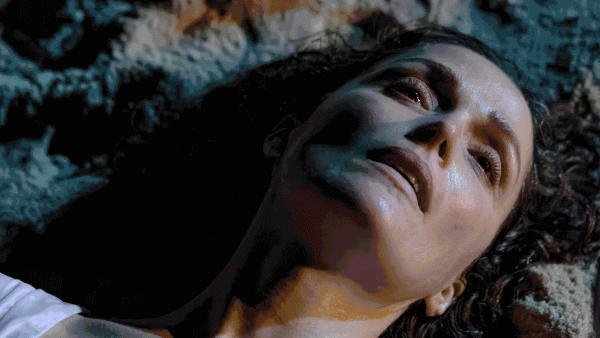
Save this storySave this storySave this storySave this story
The New York Film Festival, a cornerstone of the city’s cinematic calendar, suffers from its own popularity. A lot of its most talked-about movies are already set for imminent public distribution—which is good news, since they will be viewed by larger audiences in a more affordable way, even appearing on streaming platforms far away from art-house cinemas. However, because of this, the festival showings feel more like an advance viewing instead of an unmissable opportunity. Still, the event’s vibe reliably transforms Lincoln Center into a vibrant hub of film appreciation, and the eager anticipation that draws viewers inside provides a sense of shared passion among those attending the cinema.
My colleague Anthony Lane’s recent article on the art and craft of film preservation is a helpful reminder to take note of the N.Y.F.F.’s dynamic Revivals section, which is packed with noteworthy new restorations, including one—Erich von Stroheim’s “Queen Kelly,” from 1929—that’s brimming with acrimony both in its narrative and in its production background. Stroheim’s bitter perspective, unfolding amid the splendor and excess of a fictional Middle European kingdom, portrays harsh intersections of desire and dominance among both the elite and the marginalized. The film’s lead, Gloria Swanson, embodies an orphaned convent novice who, during a trip outside the convent, captures the interest of a charmingly flirtatious prince (Walter Byron) who happens to be the mistress’s lover and the queen-to-be’s future husband (Seena Owen). The situation escalates to violence, leading to banishment and humiliation in the kingdom’s African territory. Stroheim’s stringent and lavishly realistic techniques provoked the movie’s producer, the powerful and authoritative Joseph Kennedy, to halt the undertaking, consequently ending Stroheim’s career as a filmmaker. The remaining version, expanded with additional scenes, demonstrates the film to be a dazzling, intensely ornate, yet disturbing triumph of sensual delights and horrors.
Contemporary cinema offers entirely new methods of portraying the restrictive nature of traditional cultures, including intimate documentary filmmaking, such as Nathan Silver’s “Carol & Joy,” presented in the festival’s New York Shorts program. The namesake subjects are the actress Carol Kane and her mother—and Upper West Side housemate—Joy Kane, who’s ninety-eight and full of captivating stories. Joy was raised in Cleveland, where her father practiced as a psychiatrist. (His lineage, she states, originates from “the shtetl”; her mother hailed from Austria.) She was brought up, she recounts, under rigid standards that stifled her independently creative spirit and that she unsuccessfully tried to defy. Joy recalls a past of cold regulation, of threats and insults and disloyalties, which took her decades to resolve. Her later-life achievements as a musician are emphasized in the film, alongside her insightful reflections on the spirit of freedom that underpins the creative drive.
Typical family expectations are universal beyond European boundaries, and the South Korean director Hong Sangsoo prominently features them in “What Does That Nature Say to You,” a narrative of youthful love exposed to critical parental assessment. The storyline commences with a coincidence rooted in intent. A poet in his thirties drives his girlfriend to the home of her parents—whom he hasn’t encountered, despite a three-year connection—and, in the driveway, he happens to meet her father. The two men connect, the poet is invited for dinner, and the inevitable questionings start. Regrettably, the young man’s father is affluent and notable, a subject that the potential family cannot overlook. In the alcohol-induced warmth of the occasion, questions regarding financial prospects and artistic goals are posed—and reiterated constantly, growing in intensity, to a boiling point. Hong, with aggression and accomplished art-house mastery, captures the dreadful dinner in depictions of exquisite, precarious suspense.
Mary Bronstein’s second movie, “If I Had Legs I’d Kick You” (one of the celebrated debuts at Sundance earlier this year), like “Carol & Joy,” is also a narrative about a mother and daughter—and a psychotherapeutic exploration. Rose Byrne plays Linda, a therapist whose young daughter is constantly unwell and whose husband, a sea captain, is absent for prolonged periods, leaving her to manage their child’s health and emotional issues alone. These strains are disrupting her work as a psychologist, leading to friction with her own therapist—and workmate (Conan O’Brien); in the meantime, other aspects of her life are collapsing (including her home, literally). Linda faces relentless stress, mirrored by the movie’s frenetic medley of feelings and its use of close-ups of the stressed protagonist, whose environment becomes smaller as her difficulties increase and her anger intensifies—leading to an explosion.
Among other remarkable contributions during the festival’s first week, psychological portrayal unfolds through externalization—the inner world is projected outwards as events of historic, even momentous, importance in the broader world. These historical dramas include the Brazilian director Kleber Mendonça Filho’s “The Secret Agent,” mainly set in Recife, on Brazil’s Atlantic shoreline, in 1977, when the country was governed by a military regime. The central figure is a scientist (Wagner Moura) who has angered the ruling power and seeks out an undercover network of supporters. Upon discovering that he is being hunted by government-linked assassins, he adopts ever more drastic methods of avoidance, which distort his own identity. Mendonça, reveling in period details and environments, daringly jumps around in the timeline and unveils a diverse collection of characters, most of whom have secrets of their own. The film places its persecuted protagonist on a lively public platform, the fervor of the Brazilian Carnival, and also examines him in the dimness of his own intangible legacy.
Kelly Reichardt’s “The Mastermind” is also a story of evasion and escape. Taking place around 1970, it revolves around a former art student and unsuccessful woodworker called James (Josh O’Connor) who assembles a team of misfits to pilfer paintings from a nearby museum. When the scheme goes awry, he goes on the lam. Reichardt’s historical recreation has a subtle precision that extends from clothes and furnishings, actions and language, into the fundamental attitudes that prevailed. A stellar ensemble cast (including Alana Haim, Hope Davis, John Magaro, and Gaby Hoffmann) seems not only to exist within the era but to embody it: the Vietnam War and the protests it triggered are not merely a backdrop but the inescapable core conflict of everyday life.
“Peter Hujar’s Day” represents a distinctive mix of genres. It is also a historical drama, but also a documentary in the real sense that it dramatizes an archival document—a recording of a 1974 interview with the titular photographer and gay-liberation activist. The interview was carried out by the writer Linda Rosenkrantz in her Manhattan apartment; her aim was to ascertain how her artist acquaintances spent their time. In the film, Rosenkrantz (portrayed by Rebecca Hall) requests Hujar (Ben Whishaw) to deliver a recounting of his previous day, and his narrative—filled with figures such as Susan Sontag, Allen Ginsberg, and William S. Burroughs—reveals a segment of downtown culture. It also explores the intense energies of artistic expression and the numerous ways those energies are redirected and diffused. The passionate exchange, vibrating with creative urgency, serves both as a reflection of the period and a message in a bottle for future artists. ♦
Sourse: newyorker.com






